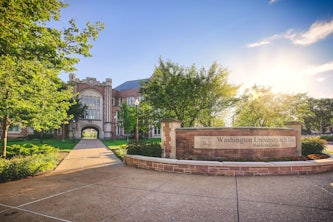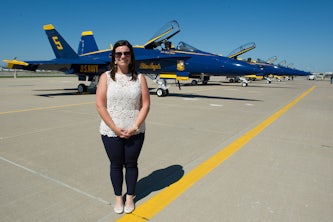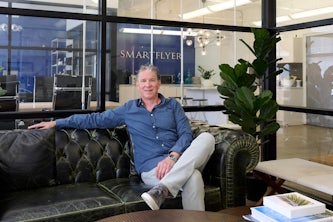Alumnus Bose enjoys research in the Antarctic
Alumnus Richard Bose manages the technical efforts of the SuperTIGER and X-Calibur research teams in Antarctica

Richard Bose knows what it's like to go to the ends of the earth for science.
Bose, who earned a master's in electrical engineering from McKelvey School of Engineering in 2008, has gone to Antarctica three times since 2012 to support research on cosmic rays and X-rays. As a research engineer in the Laboratory for Experimental Astrophysics in the Department of Physics at Washington University in St. Louis, he works on the SuperTIGER and X-Calibur projects. SuperTIGER studies what made cosmic rays and how they get their energy, while X-Calibur studies the polarization of X-rays emitted by astrophysical sources.
Most recently, in late 2018 and early 2019, he and the team spent 73 days in Antarctica, celebrating Thanksgiving, Christmas and New Year's Day at McMurdo Station, the United States' research station on Ross Island, the solid ground farthest south that is accessible by ship. Except Bose and the WashU team, led by Henric Krawczynski, professor of physics, and Brian Rauch, research assistant professor of physics who earned two bachelor's degrees, a master's degree and a doctorate from WashU, didn't get to McMurdo Station by ship. They flew from St. Louis to New Zealand, where they had two days of orientation and got outfitted with gear appropriate for working outdoors in Antarctica's frigid temperatures. Then the team boarded a U.S. Air Force C-17 cargo plane from Christchurch, New Zealand, for a five-hour flight, only to land on a runway of packed snow on the Ross Ice Shelf.
"We go in November, which is their summer so the sun never sets, and the weather is similar to St. Louis' weather at that time," said Bose, who also earned a bachelor's degree in economics and physics from WashU in 2001 and has worked at the university since 2005. "But we can't launch the balloon until conditions are right, so we get it ready, then wait."
SuperTIGER, which stands for Super Trans-Iron Galactic Element Recorder, is a 4,000-pound balloon-borne instrument developed to measure the elemental composition of ultra-heavy galactic cosmic-ray nuclei and to accurately measure the energy spectra of the more abundant light elements. Its inaugural flight was in 2012–2013, sending down data after 55 days in the air. In 2016-2017, the team attempted to launch the balloon 16 times, but the winds were uncooperative. The team left its equipment there to winter over until it returned in November 2018.
"We had two flight attempts this year," Bose said. "The second time it launched, but then something happened and the balloon leaked. We got a six-hour flight, but no data. It was brutal. It can be so successful, and it can be so heartbreaking. The broader story is perseverance on the harsh continent."
As research engineer, Bose is responsible for the electronics and circuit boards in SuperTIGER and X-Calibur as well as managing the technical efforts of the science team and interfacing with Columbia Scientific Balloon Facility personnel who support and launch NASA's balloon missions.
"As soon as something doesn't work quite right, they all look at me," he said.
Bose also worked on the X-Calibur project, a telescope used to observe the X-ray emission from a sample of black holes, neutron stars, and pulsars in the Milky Way galaxy. The team develops all of the electronics at WashU and integrates them into the telescope. X-Calibur flew for three days on its most recent mission, and the team has proposed to rebuild and fly again in a few years.
Bose said the balloons and their payloads are about 8,000 pounds combined.
When he's not building equipment for the scientific equipment, Bose is taking photographs. On the team's most recent trip, he took thousands of photographs and some videos to document the preparation, launch and recovery of the SuperTIGER. He compares his work on the project to a small business.
"We get to see the projects all the way through," he said. "We work with scientists and diagrams and get to pick out equipment and buy that. I design circuit boards and arrange for them to be made and assembled, do some debugging and FPGA programming, and maybe write a little bit of software."
Bose said the team plans to return to Antarctica for another try at the end of this year. In the meantime, some of the equipment has come back to WashU for the team to work on before its next trip.



